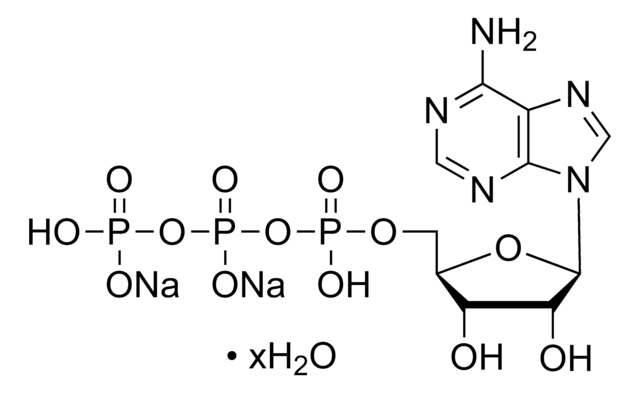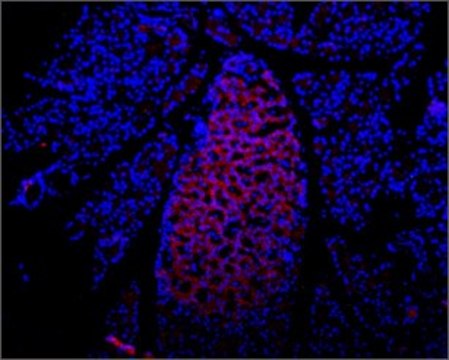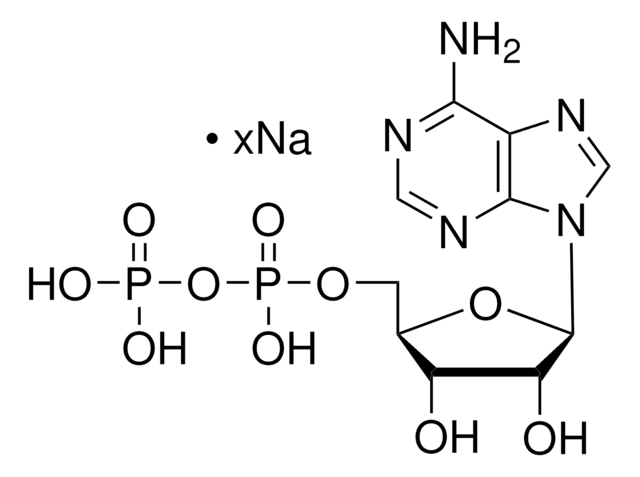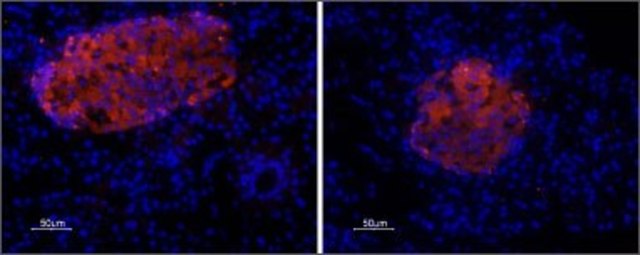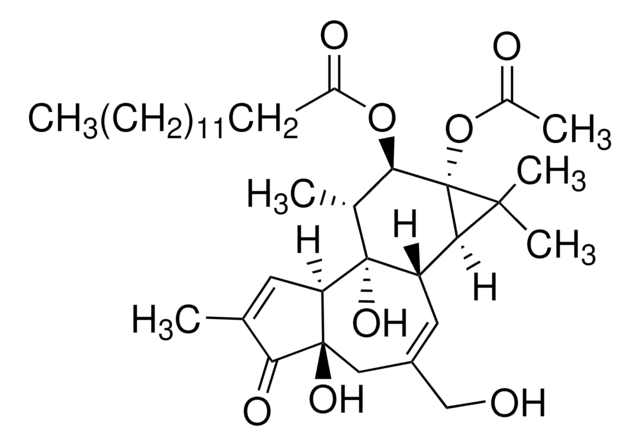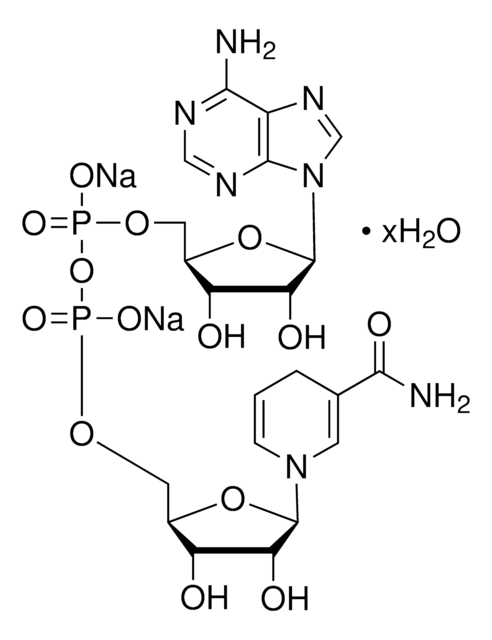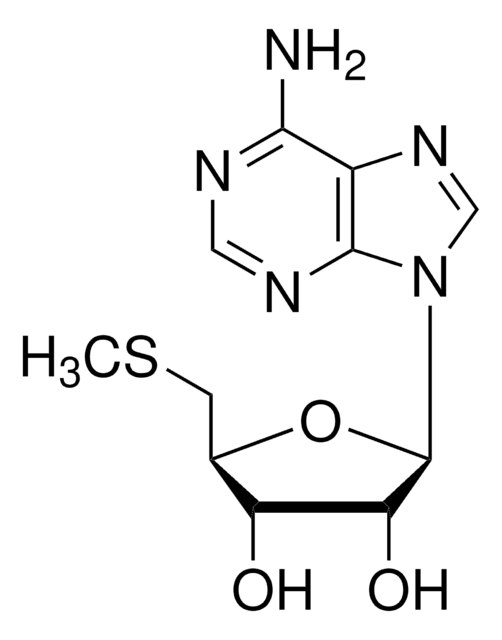P8997
Anti-Purinergic Receptor P2X7 (extracellular)−FITC antibody produced in rabbit
affinity isolated antibody, lyophilized powder
Synonym(s):
Anti-P2Z
Sign Into View Organizational & Contract Pricing
All Photos(1)
About This Item
Recommended Products
biological source
rabbit
Quality Level
conjugate
FITC conjugate
antibody form
affinity isolated antibody
antibody product type
primary antibodies
clone
polyclonal
form
lyophilized powder
species reactivity
human, rat, mouse
technique(s)
flow cytometry: 10 μg/test using Jurkat T-cells
UniProt accession no.
shipped in
dry ice
storage temp.
−20°C
target post-translational modification
unmodified
Gene Information
human ... P2RX7(5027)
mouse ... P2rx7(18439)
rat ... P2rx7(29665)
Related Categories
General description
Purinergic Receptor P2X7 is a ionotrophic ATP-gated channel responsible for ATP-dependent lysis of macrophages through the formation of membrane pores permeable to large molecules. ATP activation of the P2RX7 leads to recruitment of pannexin pores which allow small molecules such as ATP to leak out of cells further activating of purinergic receptors and physiological responses such a spreading cytoplasmic waves of calcium.
Fluorescein isothiocyanate (FITC) is a fluorescein derivative (fluorochrome) used to tag antibodies, including secondary antibodies, for use in fluorescence-based assays and procedures. FITC excites at 495 nm and emits at 521 nm.
Fluorescein isothiocyanate (FITC) is a fluorescein derivative (fluorochrome) used to tag antibodies, including secondary antibodies, for use in fluorescence-based assays and procedures. FITC excites at 495 nm and emits at 521 nm.
Specificity
Rabbit polyclonal anti-Purinergic Receptor P2X7 (extracellular)−FITC antibody reacts with rat, human, and mouse purinergic receptor P2X7 (extracellular).
Immunogen
synthetic peptide corresponding to residues 136-152 of mouse P2X7 receptor. Sequence homology with human, mouse, and rat is identical. Bovine is 14/17 residues identical.
Application
Rabbit polyclonal anti-Purinergic Receptor P2X7 (extracellular)−FITC antibody is used to tag Purinergic Receptor P2X7 (extracellular) for detection and quantitation by fluorescence-based immunocytochemical and immunohistochemical (IHC) techniques. It is used as a probe to determine the presence and roles of Purinergic Receptor P2X7 (extracellular) in ATP-dependent processes such as cell lysis and calcium movement.
Physical form
Lyophilized from phosphate buffered saline, pH 7.4, containing 1% BSA and 0.05% sodium azide.
Disclaimer
Unless otherwise stated in our catalog or other company documentation accompanying the product(s), our products are intended for research use only and are not to be used for any other purpose, which includes but is not limited to, unauthorized commercial uses, in vitro diagnostic uses, ex vivo or in vivo therapeutic uses or any type of consumption or application to humans or animals.
Not finding the right product?
Try our Product Selector Tool.
Storage Class Code
13 - Non Combustible Solids
WGK
WGK 2
Flash Point(F)
Not applicable
Flash Point(C)
Not applicable
Regulatory Information
常规特殊物品
含少量动物源组分生物产品
Choose from one of the most recent versions:
Already Own This Product?
Find documentation for the products that you have recently purchased in the Document Library.
Mingxuan Li et al.
Journal of immunology (Baltimore, Md. : 1950), 205(7), 1752-1762 (2020-09-02)
P2X7 receptor (P2X7R) is highly expressed on immune cells, triggering the release of cytokines and regulating autoimmune responses. To investigate P2X7R surface expression on T helper (Th) 1, Th17, and regulatory T (Treg) cells in patients with systemic lupus erythematosus
Jasmine M Manouchehri et al.
Frontiers in oncology, 12, 855032-855032 (2022-05-07)
Breast cancer affects two million patients worldwide every year and is the most common cause of cancer-related death among women. The triple-negative breast cancer (TNBC) sub-type is associated with an especially poor prognosis because currently available therapies fail to induce
Our team of scientists has experience in all areas of research including Life Science, Material Science, Chemical Synthesis, Chromatography, Analytical and many others.
Contact Technical Service